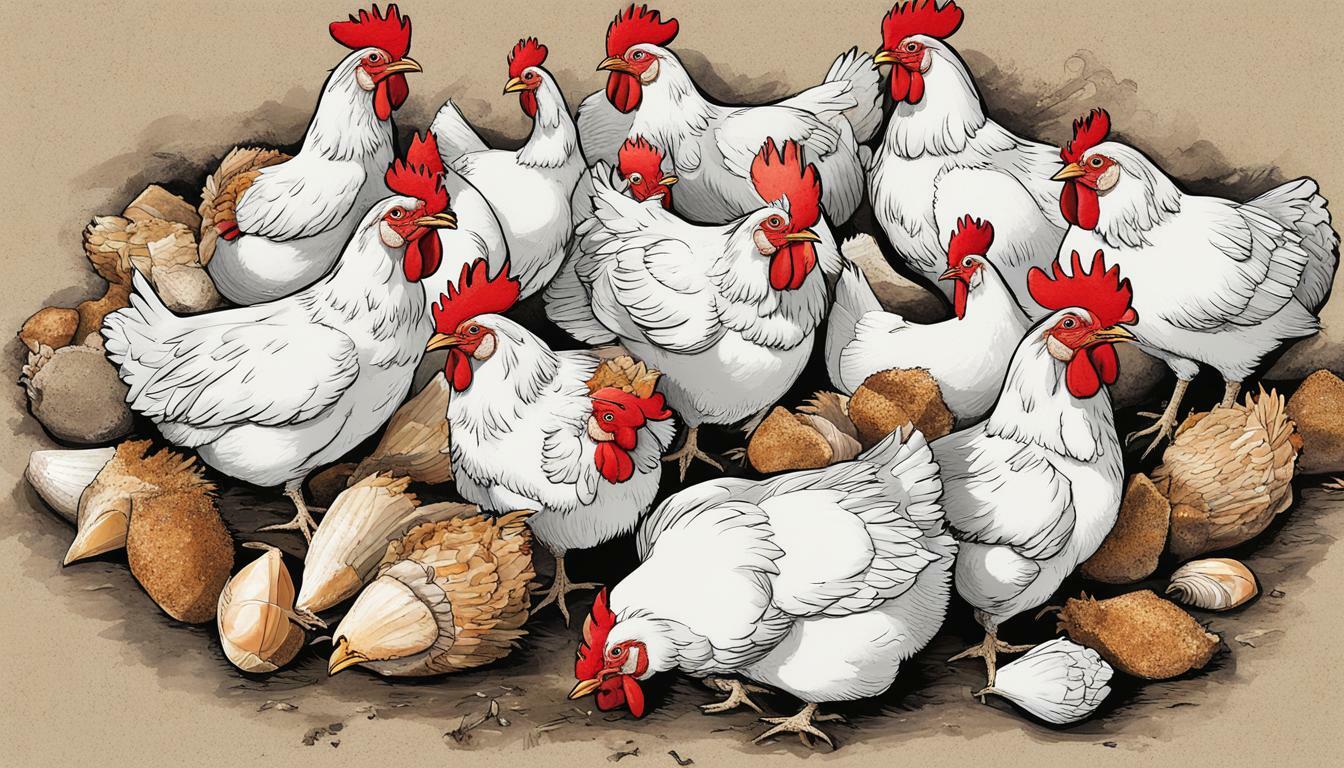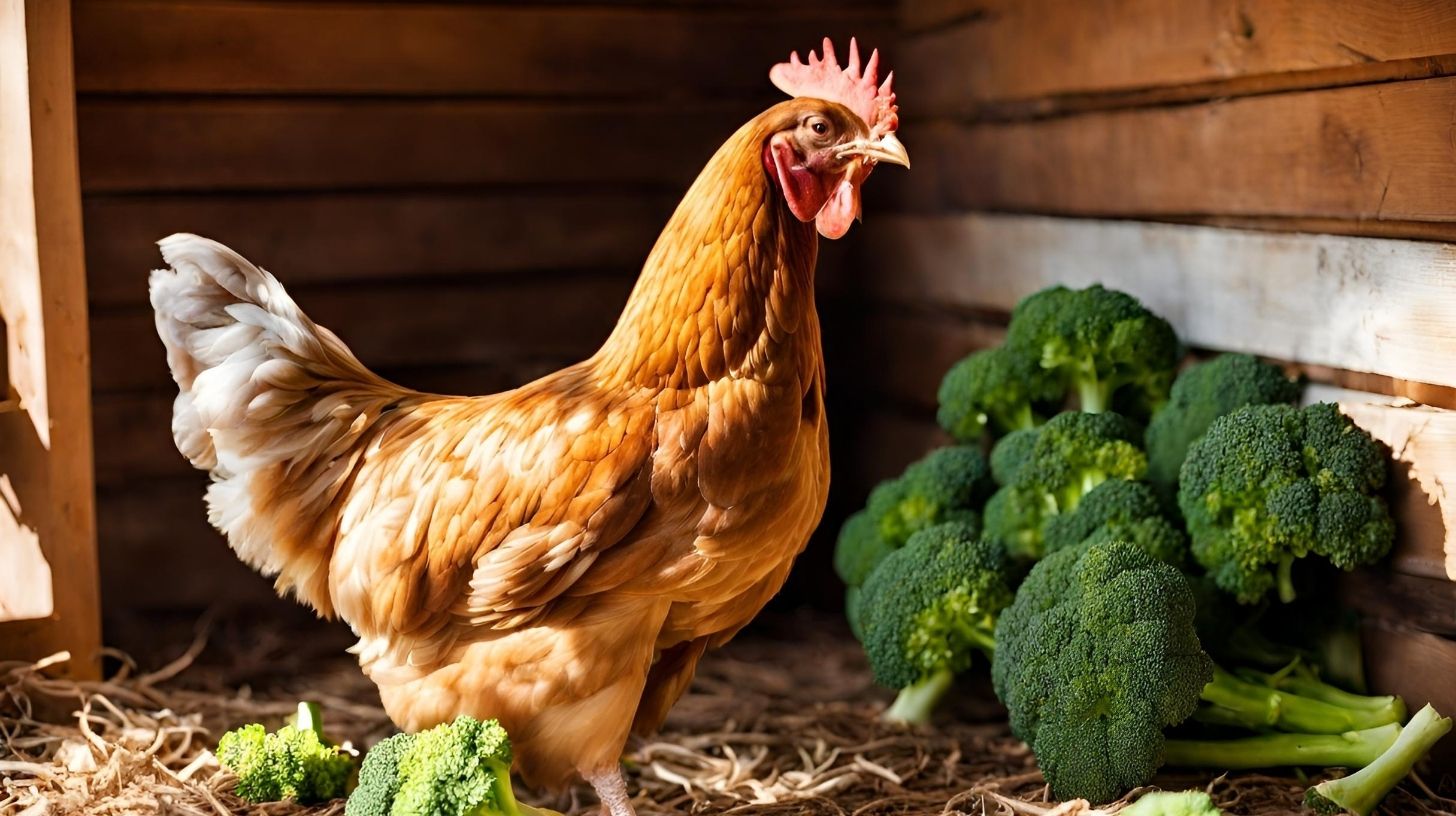Can Chickens Eat Crab Shells? Find Out in Our Helpful Guide

Daftar isi:
- Key Takeaways
- Can Chickens Consume Leftover Crab Shells?
- Do Crab Shells Offer Any Benefits for Chickens?
- Are There Any Risks of Feeding Chickens Crab?
- What Parts of Crab Can Chickens Eat?
- What Quantity of Crab Shells Can Chickens Eat?
- Cooking, Crushing & Storing Crab Shells for Chickens
- Are Other Shellfish Safe for Chickens Too?
- Final Thoughts
Chickens are versatile backyard birds that can eat a variety of foods beyond traditional chicken feed. Many flock owners wonder if leftovers like crab shells can be fed safely. This article provides valuable information on whether chickens can eat crab remnants.
Key Takeaways
- Crab shells are generally safe for chickens to eat in moderation. They provide beneficial calcium and other nutrients.
- Cooked shellfish scraps minimize bacteria risks. Rinse well and remove dead meat or residue.
- Chitin in shells aids digestion and provides grit, though large sharp pieces may cause injury.
- Feed only a few crushed shells occasionally as a supplement, not a staple chicken feed.
Can Chickens Consume Leftover Crab Shells?
Backyard chickens are natural scavengers and enjoy diverse foods. Owners often ask if leftover crab legs, shells, and other seafood remnants can safely be fed as treats. In short, yes! Hens can eat small amounts of rinsed crab shells as part of a balanced omnivorous diet.
The hard outer exoskeletons are a good source of calcium carbonate. This provides necessary calcium for strong eggshell production. Crab coverings also contain other healthy minerals like phosphorus and magnesium.
Despite benefits, crab shells lack key nutrients that chickens need. They should only supplement a complete chicken feed, not replace it entirely.
Do Crab Shells Offer Any Benefits for Chickens?
In addition to supplemental calcium, crab and other crustacean shells offer several advantages for backyard flocks:
- Protein – Shells contain some residual meat and animal-based protein for growth.
- Chitin – This insoluble fiber aids digestion and gut health.
- Grit – Shell pieces help grinding in the gizzard like oyster shells.
- Pest control – Shell remnants may deter garden pests like slugs or snails when spread.
- Compost/Fertilizer – Chelated calcium and chitin enrich manure and compost.
Overall, the modest nutritional boost and other perks make occasionally feeding crab and lobster leftovers worthwhile. Just avoid frequent large amounts.
Are There Any Risks of Feeding Chickens Crab?
While crab can be safe for backyard chickens, take precautions:
- Cooked vs. raw – Cooking neutralizes most bacteria, viruses, and other pathogens. Rinse thoroughly.
- Meat, fat, residue – Remove uneaten wet meat, which can harbor salmonella.
- Size of pieces – Large sharp shells may cause crop impaction or injure the gizzard. Crush into smaller fragments first.
- Quantity – Too much substituted for feed leads to nutrient deficiencies. Give only a few small servings weekly.
- Freshness – Rotting scraps allow harmful microbes to grow. Refrigerate remains and remove any with odors.
With proper handling, the minimal risks of cooked crab remnants are outweighed by potential advantages for the flock.
What Parts of Crab Can Chickens Eat?
Chickens are eager omnivores and relish diverse treats beyond standard feed. Here are some common questions on which crab parts are safest:
- Legs and body shells – The exoskeleton provides the majority of benefits. Rinse and crush these first.
- Claws – Small whole claws are okay if chickens can break them. Avoid large sharp pieces.
- Meat – Cooked crab meat gives added protein, but offers little otherwise nutritionally.
- Guts – Viscera provides minimal benefits and may harbor microbes. Remove.
- Eyes – Small amounts pose no issue, but eyes offer no nutritional value.
- Dead crab – Avoid whole dead crabs. Remove meat and feed only cleaned shells.
In summary, properly prepared shells from bodies and legs are the best crab parts for occasional chicken snacks.
What Quantity of Crab Shells Can Chickens Eat?
Since crab shells are very low in complete nutrition for chickens, they should only be fed in limited amounts as supplements. Here are some feeding guidelines:
- 10% or less of diet – Shells should comprise no more than 10% of total feed.
- 1-2 shells per bird – For a daily treat, offer just 1 or 2 small crushed shells per chicken.
- 1-2 times weekly – Feed shells sparingly just once or twice a week.
- Free-choice grit – Larger crushed shells can be left in the run for free choice consumption.
- Monitor changes – Decreased feed intake or loose droppings signal too much.
- Calcium balance – Overdoing shells and limiting feed creates deficiencies.
With a balanced diet and limited portions, crab remnants can be a safe, rewarding snack. But don’t overdo it.
Cooking, Crushing & Storing Crab Shells for Chickens
To maximize benefits and minimize risks when feeding crab shells, here are some preparation tips:
- Cook thoroughly – Boiling, steaming, baking etc neutralizes most microbes of concern.
- Clean shells – Rinse cooked shells well in cold water to remove residues.
- Discard fat – Excess internal crab fat can quickly turn rancid. Remove it.
- Crush pieces – Break or grind shells into dime-sized bits chickens can swallow.
- Refrigerate – Store cleaned shells in a sealed container in the fridge up to one week.
- Freeze option – Frozen shells keep longer but limit their grit utility.
Proper cooking, cleaning, crushing, and storage helps ensure crab shell supplements are a healthy, enjoyable treat.
Are Other Shellfish Safe for Chickens Too?
In addition to crab, chickens can enjoy limited amounts of other shellfish as well:
- Shrimp – Boiled shrimp shells offer similar benefits to crab. Rinse well.
- Lobster – Shells from lobster tails or claws make a calcium-rich snack.
- Crawfish – These small crustaceans have a similar nutritional profile to crab.
- Oysters – Oyster shell grit provides calcium with few risks.
- Mussels – While salty, cleaned mussel shells are not hazardous in moderation.
- Clams – Small amounts of rinsed clam shells are unlikely to cause issues.
Always cook, clean, and crush any shellfish leftovers before feeding chickens. Feed shells infrequently in limited portions along with complete feed for a healthy diet.
Final Thoughts
With proper preparation and limitations on quantity, feeding chickens crab shells and other shellfish remnants can be a safe way to provide supplemental nutrition. The shells offer extra calcium, chitin fiber, and other advantages. However, crab shells should never outweigh complete feed in the flock’s diet. By following basic feeding guidelines, leftover shells can be a nutritious and enjoyable treat without posing significant risk. Moderation is key.
In summary, the shells from cooked crab, lobster, shrimp and other crustaceans can make a beneficial addition to a backyard flock’s kitchen scrap bucket. Chickens gobbling up bits of calcium-rich shells will help keep your leftovers out of the trash while aiding the birds’ health – a win-win for happy hens and humans alike!
Welcome. I’m Adreena Shanum, the proud owner of this website, and I am incredibly passionate about animals, especially poultry. I founded adreenapets.com as a labor of love, stemming from my desire to share my knowledge and experiences with poultry enthusiasts worldwide.




